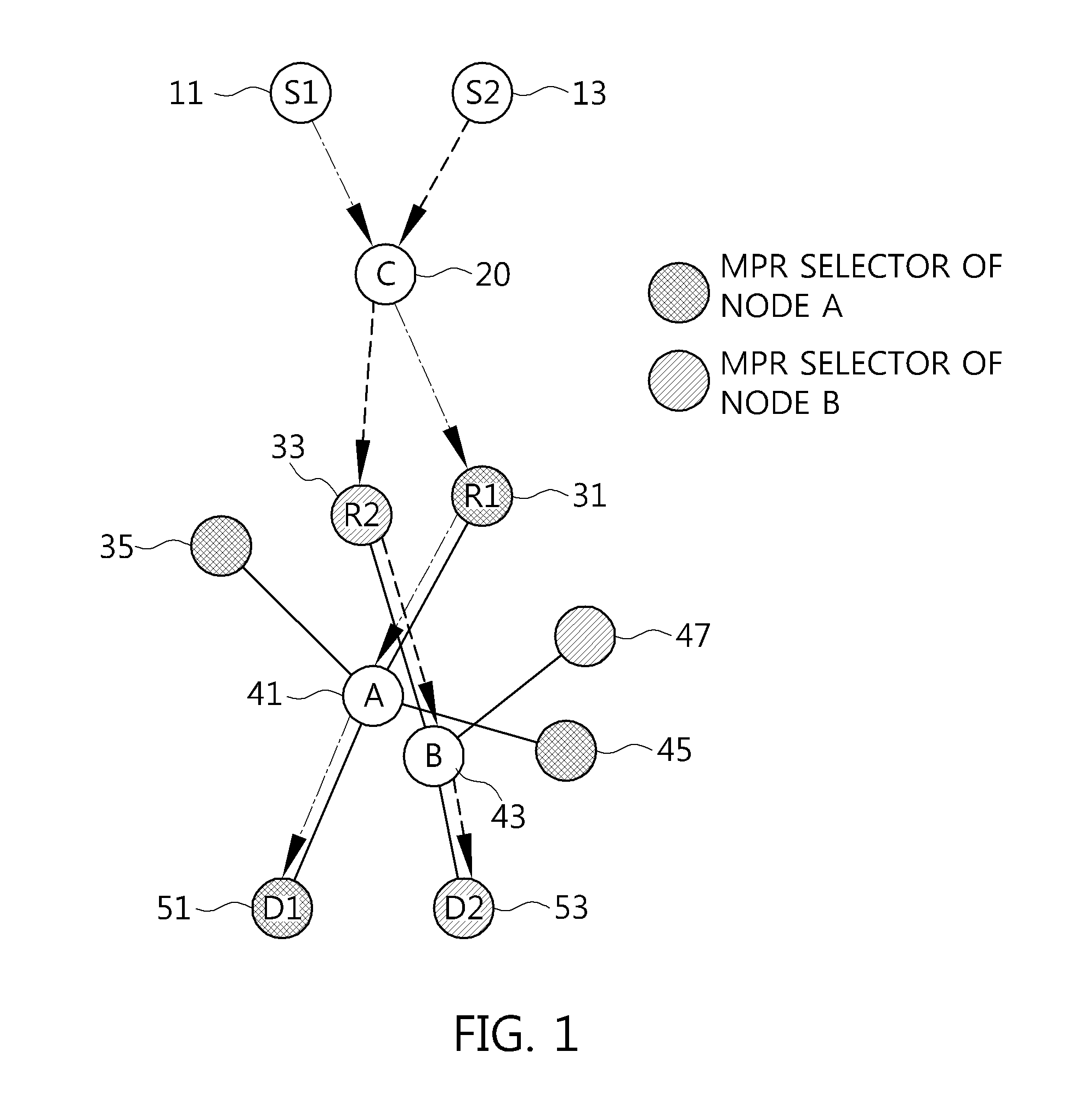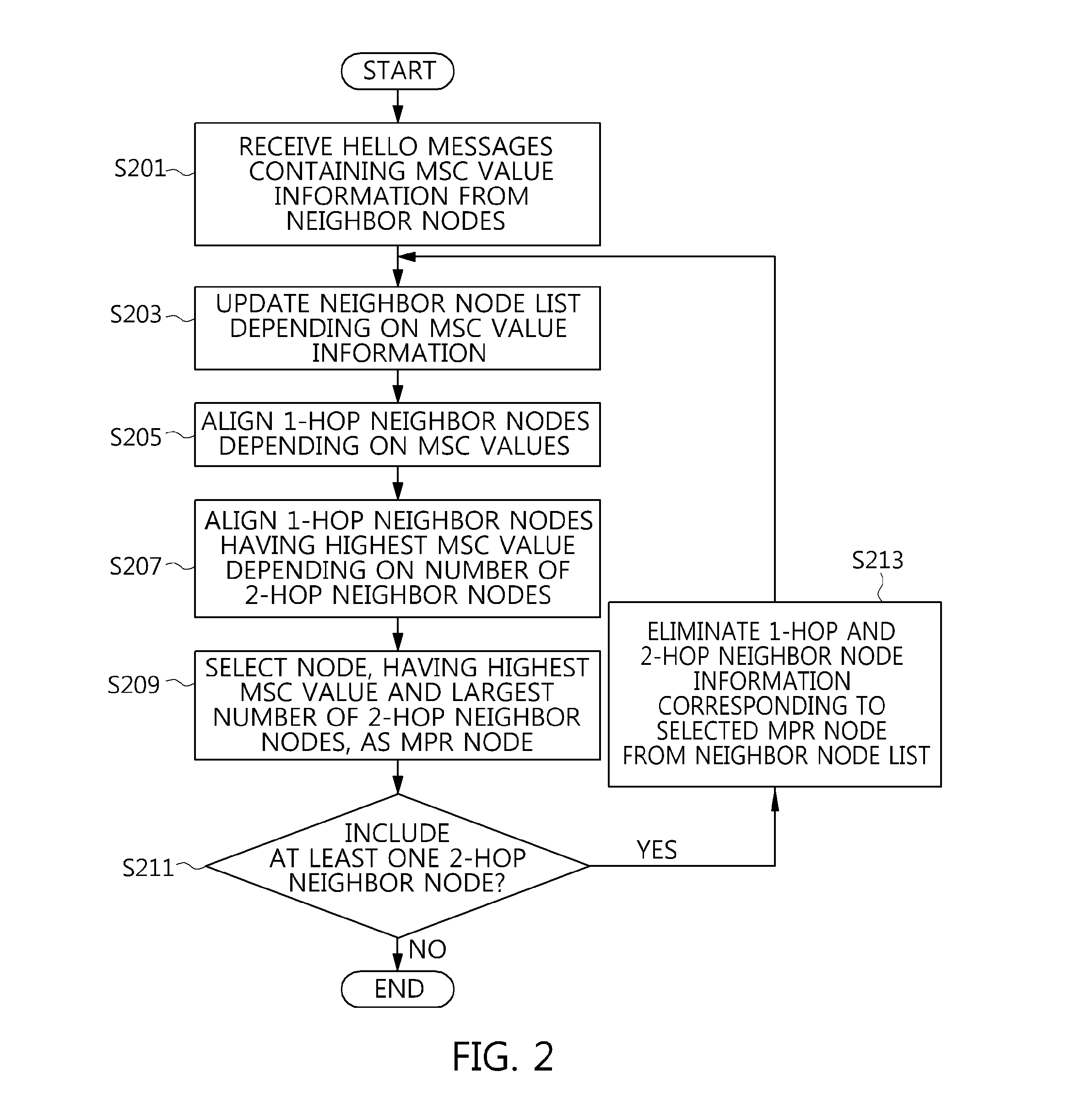Method of selecting relay mode in mobile ad-hoc network
a mobile ad-hoc network and relay technology, applied in multiplex communication, wireless communication, frequency-division multiplex, etc., can solve the problems of deteriorating the overall network performance, deteriorating the overall throughput, and deteriorating the efficiency of data flooding, so as to reduce the probability of channel competition and conflict, and improve the overall performance of the network
- Summary
- Abstract
- Description
- Claims
- Application Information
AI Technical Summary
Benefits of technology
Problems solved by technology
Method used
Image
Examples
Embodiment Construction
[0031]The present invention will be described in detail below with reference to the accompanying drawings. In the following description, redundant descriptions and detailed descriptions of known functions and elements that may unnecessarily make the gist of the present invention obscure will be omitted. Embodiments of the present invention are provided to fully describe the present invention to those having ordinary knowledge in the art to which the present invention pertains. Accordingly, in the drawings, the shapes and sizes of elements may be exaggerated for the sake of clearer description.
[0032]Hereinafter, preferred embodiments of the present invention will be described in detail with reference to the attached drawings.
[0033]FIG. 1 is a conceptual diagram showing a Multi-Point Relay (MPR) node selection method based on Optimized Link State Routing (OLSR) in a mobile ad-hoc network.
[0034]Referring to FIG. 1, when a predetermined node selects a relay node (hereinafter referred to...
PUM
 Login to View More
Login to View More Abstract
Description
Claims
Application Information
 Login to View More
Login to View More - R&D
- Intellectual Property
- Life Sciences
- Materials
- Tech Scout
- Unparalleled Data Quality
- Higher Quality Content
- 60% Fewer Hallucinations
Browse by: Latest US Patents, China's latest patents, Technical Efficacy Thesaurus, Application Domain, Technology Topic, Popular Technical Reports.
© 2025 PatSnap. All rights reserved.Legal|Privacy policy|Modern Slavery Act Transparency Statement|Sitemap|About US| Contact US: help@patsnap.com



